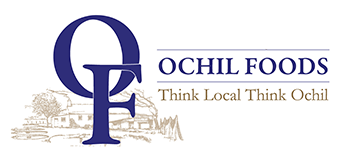My passion to bring the best Scottish produce to the kitchens of Scottish restaurants has led me to David Oakes, who has been diving for Scallops on Skye since 1987. What is remarkable about David amongst many other things, is his longevity, diving is a young man’s game and David remains fit enough to still dive daily – testament to his drive and passion. With age (he may not thank me for saying) comes experience and this he has in abundance. From our twenty minute chat in his cosy, peat fire fuelled sitting room on the banks of Loch Sligachan, David told me enough to not only swell my knowledge, but to persuade me that his Scallops should be found in the very best restaurants on the mainland. I look forward to expanding me knowledge further over the coming weeks, months and years and sharing this with you all. As we travelled round Skye we always noticed David’s Scallops on the best menu’s ahead of other divers, he has been supplying The Three Chimney’s for the past 12 years. David has a Several Fishery order for Loch Sligachan; which gives him the ability to be truly sustainable as well as supplying the best and most consistent product.
What is a several fishery order?
Our sea-beds are available for anyone to fish, however a very select few are granted a several fishery order that gives them the right to cultivate and manage an area that nobody else can touch. After a rigorous vetting process David is amongst only a handful on the UK coastline to be granted such an order. They are incredibly rare. David’s order covers an area of about 40 hectares on Loch Sligachan. This order allows David to manage cultivate and look after his area over the long term. With no pressure from others taking Scallops that are not ready to harvest. From a consumers point of view this allows David to pick you the most consistent sized and best quality Scallops.
Double Dived, what does this mean?
David’s several order gives him the security to lift Scallops from deeper waters on Loch Sligachan and “finish” them in the shallower waters, where the plankton is thicker and the Scallops can feed and achieve their full potential, giving a higher yield and a better taste, the “finishing” takes over two years. You can tell that David’s Scallops are in optimum condition when they are presented as the flat side of the shell starts to gently bulge and curve.
Quantities and Price
The number of Scallops that David can harvest is limited and we are very lucky that David has granted us the option to 100kg per week, about 400 Scallops. This number could increase, but there is a two year lead in time, as David would have to increase the number of Scallops he brings up from the deeper ground to the shallows! Double diving and the several order does mean these special scallops sell at a premium to regular hand dived scallops, but the increased yield from the shallow water finish does mean that it is in fact better value not to mention the improved taste. David tells me that the yield from the double dived Scallops averages about 25% compared to about 17% for a dredged Scallop and somewhere between the two for a dived scallop depending on the quality of the diver. There are many more fascinating bits of information David told me , such as sea water temperature rises and the effect (positive) this as had on Scallop reproduction. I’ll save that for another time.
Delivery
Sadly, we are no longer able to collect David’s Scallops due to government regulation.

